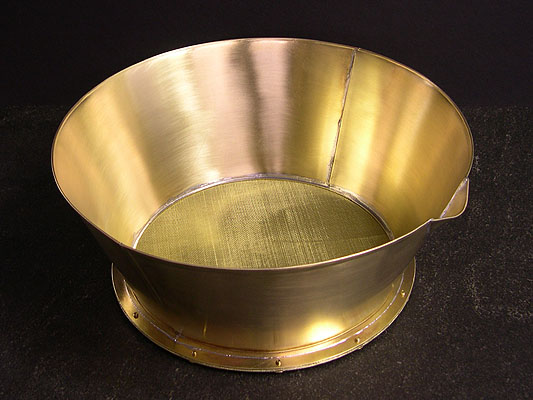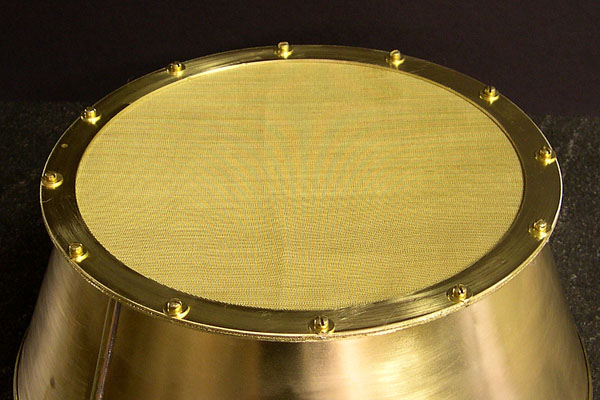Brass Sieve
 |
Every once in a while a job comes along that is just a
little bit different from the normal line of work. This is one
of them. A request for these sieves came from the United States
Department of Agriculture Plant Protection and Quarantine office
in the Finger Lakes region of New York State. The sieves that
were in use were old and the screen material was showing severe
signs of wear. New sieves were constructed completely from brass
and they were made so that the screens could be changed when
necessary.
The need for the sieves is interesting. Many years ago
some of the potato crop fields in New York State were found to
be infested with potato cyst nematodes that feed off of the potato
root and caused severe reductions in yield. Since it is virtually
impossible to eradicate this pest, the infected land has been
placed under quarantine to prevent the spread of the nematode.
All of Long Island and portions of a number of counties in the
upstate New York Finger Lakes region are currently under quarantine.
It is the job of the USDA to make sure that proper measures are
taken to insure that the problem does not spread. This work includes
disinfection of farm equipment as well as taking numerous soil
samples that must be tested for the presence of the nematodes.
This is where the sieves come into play. The soil samples
are turned into a slurry of water and soil which is poured through
a series of sieves that have progressively smaller openings in
the screen material. Since the nematodes are large enough to
be seen with the naked eye it is possible to check for their
presence on the last sieve of the progression. It is interesting
to note that while I was working on these sieves in April, 2006
a similar potato cyst nematode was discovered in a field in Idaho.
This was of considerable concern since growers in the Pacific
Northwest account for over 60% of the US fall potato production.
The yield from Idaho growers accounts for approximately one-third
of that total.
The body of the sieve has been soldered to one of two heavy
gauge brass rings; the
screen material is sandwiched between the two rings.
 |
|




